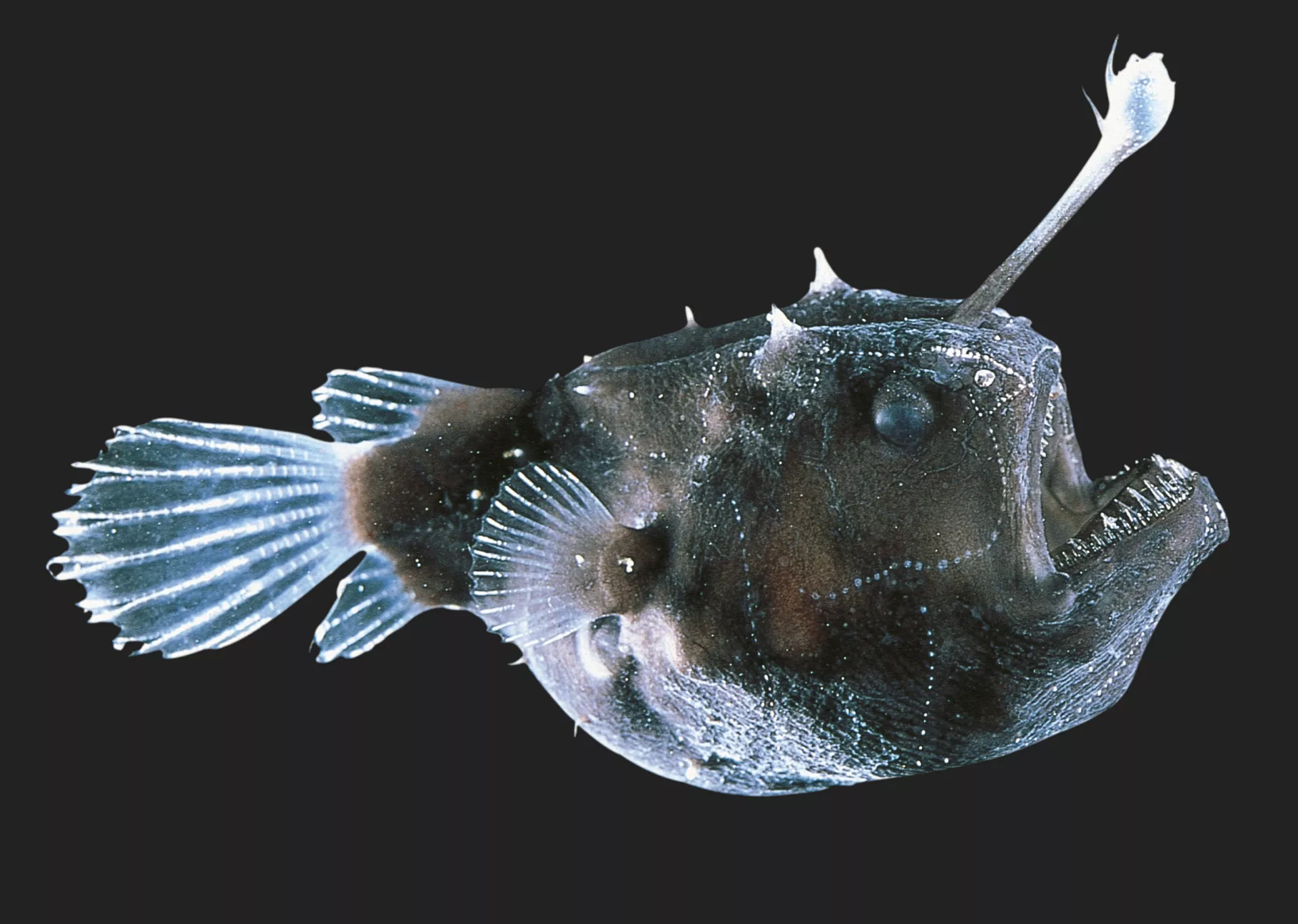
Anglerfish, with their unique appearance and intriguing behavior, are among the most fascinating creatures in the ocean. These deep-sea dwellers have an array of peculiar adaptations that set them apart from other marine species. From their bioluminescent lure to their bizarre reproductive strategies, anglerfish never cease to amaze us with their peculiarities. In this article, we will explore 18 fascinating facts about anglerfish that will deepen your understanding and appreciation for these mysterious creatures. Whether you are a marine enthusiast or simply intrigued by the wonders of the animal kingdom, get ready to dive into the world of anglerfish and discover some truly remarkable aspects of their lives. So, grab your diving gear and let’s embark on this underwater adventure!
Key Takeaways:
- Anglerfish have a unique reproductive strategy called sexual parasitism, where smaller males fuse with larger females. This behavior is essential for their survival and is a fascinating example of nature’s diversity.
- Anglerfish are masters of camouflage with their nearly transparent skin, allowing them to blend seamlessly into their environment. Their bioluminescent esca and sharp teeth make them formidable ambush predators in the deep ocean.
The anglerfish is named for its distinct fishing rod-like appendage called an esca.
The esca acts as a lure, attracting prey towards the anglerfish with its bioluminescent glow.
Anglerfish can be found in both shallow and deep waters.
They are known to dwell in depths ranging from a few feet to several thousand meters.
Female anglerfish are significantly larger than males.
This size difference is both unique and essential for their reproductive strategy.
Male anglerfish have a specialized sense of smell to detect potential mates.
They use their olfactory organs to locate the pheromones released by females.
Once a male finds a female, he fuses with her body.
This unique reproductive behavior is called sexual parasitism.
Female anglerfish can have multiple males attached to them.
It is not uncommon to see several small males attached to a single large female.
Anglerfish have incredibly sharp teeth.
These teeth are used to capture prey and hold them firmly.
They are opportunistic predators.
Anglerfish will eat almost anything that comes within their reach, including fish and crustaceans.
Some anglerfish species have bioluminescent bacteria.
These bacteria create the glow in their esca, making it even more enticing for prey.
They have a unique method of swimming.
Anglerfish use their pectoral fins to propel themselves gently through the water.
The anglerfish’s skin is thin and nearly transparent.
This allows them to blend seamlessly into their environment, making them excellent ambush predators.
They live in a variety of habitats.
From the icy waters of the Arctic to the warm waters of the tropical seas, anglerfish are found in diverse environments.
Some anglerfish have a long filament attached to their esca.
This filament mimics the movement of prey, making it even more enticing for unsuspecting victims.
The size of anglerfish can vary greatly.
While some species are only a few centimeters long, others can grow up to a meter in length.
They have a slow metabolism.
Due to the scarcity of food in their deep-sea habitat, anglerfish have adapted to survive on minimal energy.
Anglerfish have excellent vision in low-light conditions.
They possess large eyes that help them spot prey in the darkness of the deep ocean.
Some anglerfish can live up to 25 years.
Their longevity allows them to thrive in the challenging conditions of their deep-sea habitat.
The discovery of new anglerfish species is ongoing.
Scientists continue to explore and uncover new species of anglerfish, expanding our knowledge of these intriguing creatures.
So, there you have it – 18 fascinating facts about anglerfish! These incredible creatures truly showcase the wonders of the underwater world. The more we learn about them, the better we can appreciate the diversity and beauty of nature’s creations.
Conclusion
In conclusion, anglerfish are truly fascinating creatures that possess unique adaptations and behaviors. From their remarkable bioluminescent lure to their extreme sexual dimorphism, anglerfish continue to captivate the curiosity of scientists and animal enthusiasts alike. Despite the eerie appearance and mysterious lifestyle, these deep-sea dwellers play an essential role in the marine ecosystem.As we delve deeper into the fascinating world of anglerfish, we realize just how diverse and extraordinary the animal kingdom truly is. Understanding and appreciating these remarkable creatures is not only important for scientific research but also for our appreciation of the awe-inspiring wonders that exist beneath the ocean’s surface.So, the next time you come across an image or article about anglerfish, take a moment to marvel at their incredible adaptations and the secrets of their deep-sea habitat. These remarkable creatures serve as a testament to the extraordinary diversity and ingenuity found in the animal kingdom.
FAQs
Q: What is an anglerfish?
A: Anglerfish are a type of bony fish that belong to the order Lophiiformes. They are known for their distinct appearance, with some species featuring an appendage called an esca that acts as a natural lure.
Q: Where do anglerfish live?
A: Anglerfish are predominantly found in the deep-sea habitats of the Atlantic and Antarctic oceans, as well as other regions with cold, deep waters. They have also been spotted in the Pacific and Indian oceans.
Q: How do anglerfish use their bioluminescent lure?
A: The bioluminescent lure, known as an esca, is located at the end of a modified dorsal spine. Anglerfish use it to attract prey, mimicking the appearance of a small, luminescent organism. When unsuspecting prey come near, the anglerfish snaps its jaws shut, capturing its meal.
Q: Are anglerfish dangerous to humans?
A: In general, anglerfish are not dangerous to humans as they typically reside in the deep sea where encounters with humans are rare. However, some species have sharp teeth and could inflict a bite if provoked or handled improperly.
Q: How do anglerfish reproduce?
A: Anglerfish have a unique reproductive strategy where the much smaller male attaches itself to the body of a larger female. The male eventually fuses onto the female and becomes dependent on her for nutrients. This unconventional method ensures successful reproduction in the challenging deep-sea environment.
Q: What do anglerfish eat?
A: Anglerfish have a carnivorous diet and primarily feed on smaller fish, crustaceans, and cephalopods. Their bioluminescent lure helps attract prey within striking range.
Anglerfish are truly remarkable creatures, with their unique adaptations and fascinating behaviors. From their bioluminescent lures to their unusual mating habits, these deep-sea dwellers never cease to amaze. If you found these anglerfish facts captivating, why not explore the world of other intriguing marine animals? Take a closer look at the peculiar shortnose batfish and uncover even more mind-boggling facts about life beneath the waves. Each species has its own story to tell, and every discovery brings us one step closer to understanding the incredible diversity of our oceans.
Was this page helpful?
Our commitment to delivering trustworthy and engaging content is at the heart of what we do. Each fact on our site is contributed by real users like you, bringing a wealth of diverse insights and information. To ensure the highest standards of accuracy and reliability, our dedicated editors meticulously review each submission. This process guarantees that the facts we share are not only fascinating but also credible. Trust in our commitment to quality and authenticity as you explore and learn with us.


